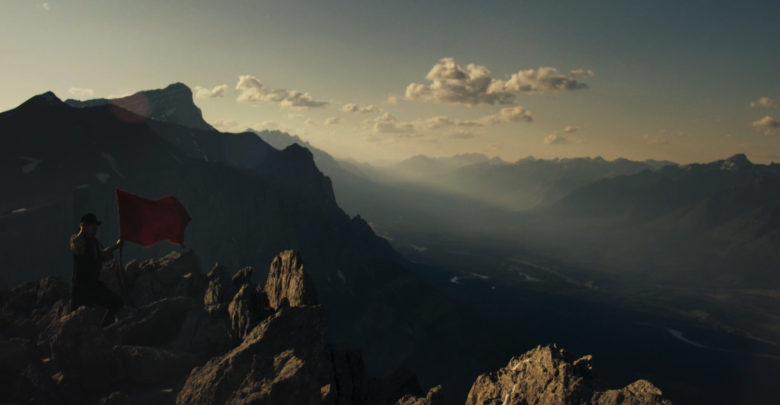‘Ha Ling Peak’ shows that name changes are no small mountain to climb
The 2018 documentary details the battle for one of Canmore's most famous peaks
 Bryce Zimmerman
Bryce Zimmerman
In the late 1990s, a political battle erupted in Canmore over what to call Ehagay Nakoda’s westernmost peak. Colin Waugh revisits that battle with Ha Ling Peak, a 2018 documentary that explores the mountain’s history through the much-debated story of a Chinese mountain climber.
In 1896, the Medicine Hat News reported that a man named Ha Ling scaled a 5000-foot mountain on a $50 bet, returning in record time. As the documentary reveals, however, locals are undecided to this day on details like Ha Ling’s occupation and the reason for his hike, although some speculate that his ascent celebrated the Double Yang festival.
One thing is clear, despite the Medicine Hat News’ attempt to name the mountain after Ha Ling, the summit bore the derogatory name “Chinaman’s Peak” for 101 years.
Roger Mah Poy is a former Canmore schoolteacher who pushed to change the peak’s name in 1997. In the documentary, Mah Poy explains how the common usage of the word “Chinaman” implied Chinese people were not worth calling by their given names. Chinese mining and railway workers were even given names such as “Chinaman 1” or “Chinaman 2” during Ha Ling’s lifetime. The derogatory nature of the word carries to today, as it is viewed commonly as a racial slur.
From re-envisioning Ha Ling’s climb to exploring Canmore’s mining history, Ha Ling Peak achieves a lot in 45 minutes. The film doesn’t just share local perspectives through a series of interviews, but it also features a striking soundtrack by Jordan Bloeman and captivating shots of beautiful mountain valleys.
While the artistic flair makes for a captivating documentary, at times I wondered exactly whose story was being told. The film seemed to gently depict the Canmore residents attached to the name “Chinaman’s Peak” as stubborn locals who just weren’t ready for a big change, despite their neighbours fighting to discontinue the use of a racial slur. In this respect, I think a more critical lens could have bolstered the film’s message about the intentionality behind the act of naming something.
That said, Ha Ling Peak also made space for Indigenous place names by exploring the Stoney Nakoda story preexisting Ha Ling. As Stoney Nakoda consultation manager William Snow explains in the film, Ha Ling Peak is just one summit of Ehagay Nakoda mountain. This situated Ha Ling’s story within a broader context of place names and their meanings.
As lexicographer John Considine explains in the film, words like “Chinaman” apply a harmfully homogenous label. This felt particularly poignant in a time when a term like “China virus” is casually weaponized.
Ultimately, the efforts of people like Roger Mah Poy indicate how our use of words can impact how we think.
“My hopes were that somewhere in all this 21st-century name-making, [young people] would just naturally call [the peak] Ha Ling,” Mah Poy says in the film.
When I hiked the summit as a teenager, I had only ever known it as Ha Ling Peak. Mah Poy’s wish is coming true, and that is no small feat.
While Ha Ling Peak has its limits, the film is a beautiful reminder that we all have a responsibility to learn about the land we live on and remain critical of the words we hear.
Ha Ling Peak is available to stream for free on CBC Gem.




